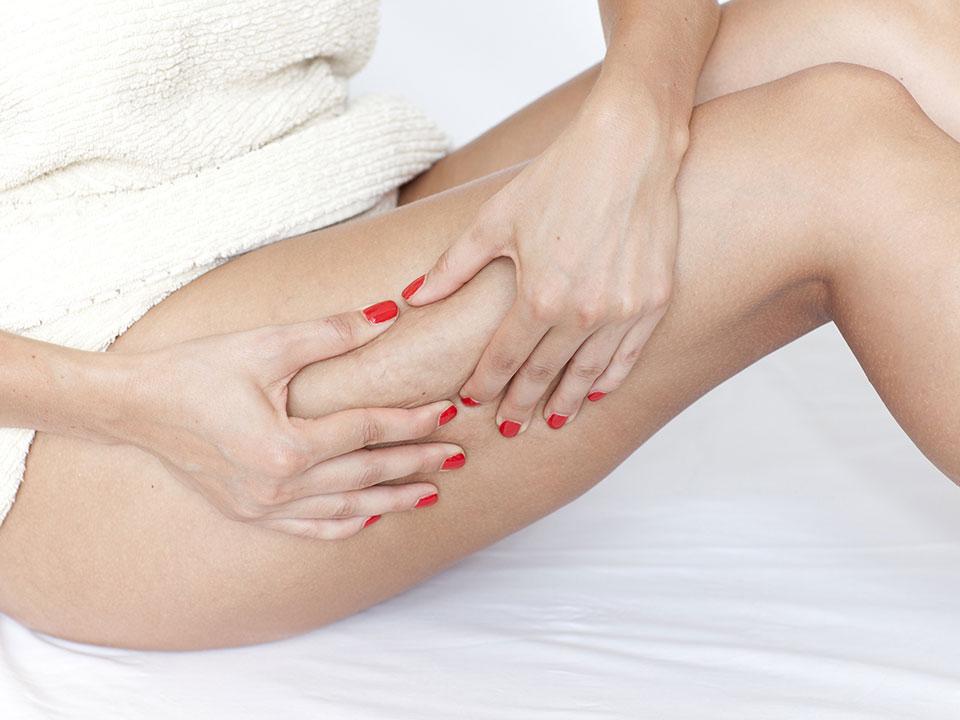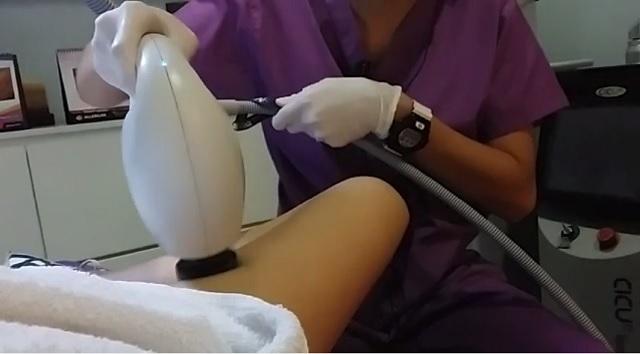Filtered By: Lifestyle
Lifestyle
Dimple dilemma: Cellulite and how to treat it
By CHINA JOCSON

Last week, after my usual post-shower regimen, I noticed something unusual with my right thigh—it seem to have grown dimples. And while dimples on the face are generally adorable, dimples on the thigh are unbelievable. Panic-stricken, I checked my leg in every mirror in the house, in every angle and in every possible lighting, hoping the abnormality was nothing but a visual trick, but it was not. It was cellulite.
At 110 pounds with a relatively active physical routine and a diet of fish, greens and poultry, I was in disbelief. Not wasting time, I immediately rang both my dermatologists to schedule an intervention.
Dr. Sherwin Llego of Makati Medical Center has been my dermatologist for almost four years. I find his approach in most of my treatments to be traditional, conservative and highly effective. Dr. Jean Marquez of The Skin Specialist (and GMA's Pinoy MD), who has been treating me for two years, is more contemporary, machine-geared and effective as well. Both are members of the Philippine Dermatological Society, and both have also assessed my thigh dimples to be adiposis edematosa, dermopanniculosis deformans, status protrusus cutis, and gynoid lipodystrophy, yes… cellulite. Gasp!
What is cellulite?
“Cellulite is a condition in which the skin appears to have areas with underlying fat deposits surrounded by fat, fibrous bands, giving it a dimpled, lumpy appearance,” Marquez explained.
“Hormones, genetics, diet, lifestyle and tight clothing contributes to cellulite formation,” she added.
Llego pointed out that cellulite is more common to women than men, largely due to a woman’s fat distribution, genes and metabolism. “Cellulite may actually affect 90% of women at one point in their lives, and these can appear as early as puberty,” he said.
The thighs, buttocks, legs and abdomen are common areas for cellulite, but our doctors said it can appear on almost any part of the body.
Treatments for cellulite
Llego categorized cellulite treatment into the following:
- attenuation of aggravating factors - diet and exercise;
- physical and mechanical - kneading, carboxy treatments;
- pharmacological - creams with aminophyllin, mesotherapy; and
- lasers - radio frequency (RF), ultrasound.
Surgery as a treatment has not been discussed in any medical journal, he added.
The following cellulite treatments are widely available locally:
- ultrasound - the high frequency of the sound waves affects the fatty tissue, causing it to vibrate at a quicker interval. This gives the cells a very promising working out and causes those stubborn fat cells to heat up.
- radio frequency therapy - delivers heat to the dermis (the deepest layer of skin) and sub-dermal layers that cause collagen contraction, realignment and new collagen production.
- carboxytherapy - administration of carbon dioxide destroys localized fatty deposits by promoting collagen repair and improving the skin’s elasticity and circulation.
- mesotherapy - fat-melting injection.
- Endermologie - combines very firm massaging, rolling and sucking at the skin's surface in an attempt to break up the fat cells.
- electrical stimulation - sends electrical current to muscle and fatty tissue that promotes fat and calorie burning.
- liposuction - surgery to remove fat.
“With the exception of liposuction, all mentioned treatments are non-invasive and have been made easily accessible to patients. Hospitals, dermatological centers and slimming clinics have a variety of offering that suits each patient,” said Marquez.
Cellulite creams, however, did not get a nod of approval from the doctors, saying that the problem is “fat and stroma, which cannot be eradicated by topical means.”
Marquez and Llego agree that treatment for cellulite is best done during adulthood. Cellulite removal during puberty is possible, but strongly discouraged. Young skin is still evolving and is highly sensitive to any kind of treatment, and instead of addressing the problem, it may worsen the condition by traumatizing the area.
My cellulite and treatment

The author gets ultrasound and RF treatment for her cellulite.
First, my thigh area was cleansed, after which the ultrasound machine made several passes over the dimples. It was painless, but I felt the pressure of the machine. Then, the radio frequency machine did its job, accompanied by slight heat that was tolerable. The temperature was regulated and checked via thermometer. Anesthesia was not needed and the procedure lasted less than thirty minutes.
During the treatment I felt a strong urge to urinate and also right after, and had to make frequent trips to the bathroom. Marquez explained, “That’s the fat being flushed out. It means the procedure has started to take effect.”
Results were not instant and my case required three to four more sessions for the appearance to improve. I found the procedure hassle-free, and the doctors said that treating it this early prevents more formation.
Makati Medical Center and The Skin Specialist both charge P6,000 per session for this combination procedure.
Doctor’s advice
The above treatments are backed by medical studies and are offered in reputable hospitals and centers, the doctors said. However, they are quick to emphasize that no two patients are alike and that treatment, efficacy and results vary with each individual.
Furthermore, said Llego, prevention is always better than the cure—and making lifestyle changes will make a difference.
“Good diet and exercise at an early age can prevent and delay cellulite formation,” he said. “If it’s there already, treat it immediately. I also advise my patients to do firming exercises regularly because I have seen improvement [because of it]. It may not be instant, but the skin does improve.” — BM, GMA News
More Videos
Most Popular




